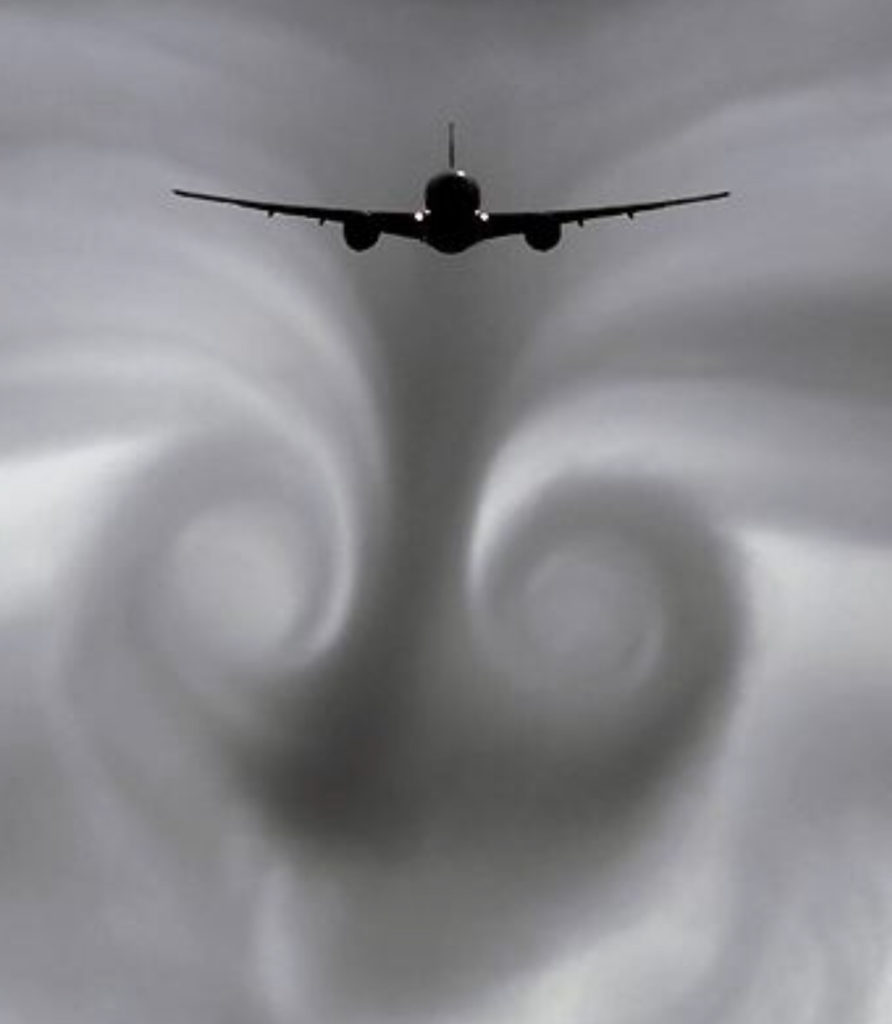
In 2001 an American Airlines Airbus A300, Flight 587, departed New York’s John F. Kennedy International airport 1 minute 30 seconds behind a Boeing 747. It encountered the 747s wake turbulence and crashed. All 260 people onboard and 5 people on the ground died. Wake turbulence is extremely rough air created by jet powered aircraft.
There have been other aircraft crashes since Flight 587 where wake turbulence was a contributing factor but safety standards and changes to pilot training are being followed because of flight 587. Now, thanks to congestion, pressure is mounting at Pearson airport to reduce these hard learned separation minimums.
Wake turbulence separation standards are designed to take aircraft size and type, as well as distances between simultaneous runway operations, into account to provide a robust level of safety to the traveling public and the residents living around airports. Due to these carefully followed standards, At JFK and other major airport including Toronto Pearson International, it has been 17 years since a major aircraft crash involving wake turbulence.
Even in the most congested airports in the North America, wake turbulence separation dictates how many aircraft per hour can depart or arrive on a runway. On departure, these standards can only be waived by the pilot of an aircraft if he/she believes conditions are suitable to do so. The GTAA (Greater Toronto Airports Authority) old masterplan for Pearson International Airport, the only airport it operates, set its maximum capacity based on these wake turbulence safety standards.

Then, in late 2017, The GTAA surprised everyone by reducing by 20% the existing separation limits in its new 2018 draft masterplan. Instead of building new airside infrastructure, with a simple stroke of the pen it increased on paper the maximum number of aircraft each of its runways could handle. Is congestion so bad that the GTAA bureaucracy needs to bank on pilots waiving current safety standards almost all the time? Is there no other solution?
Pearson International airport, is now planning on 48 aircraft movements an hour on one of its runways, hour after hour, day after day, all year round. That is an average of an aircraft movement every 1 minute 15 seconds, taking at least 15 seconds off its current limits and significantly reducing the safety margins now in use. In peak rush hour, under good weather conditions, this has and can be done as long as pilots carefully utilizes visual separation on departure. But to depend on pilots consistently ignoring an ATC controllers mandatory warning “ caution wake turbulence “ just to meet a schedule would be new.
Even if the GTAA is counting on the adoption on a new reduced separation standard called RECAT ( Wake Turbulence Recategorisation), relying on using visual separation rules appears to be the only way to meet a target of 48 movements an hour with the current mix of aircraft. Under RECAT, with ideal conditions, similar aircraft types can reduce separation down to a mere three miles. Even then 48 aircraft movements an hour on a single runway would require near perfect execution by human flight crews. Here is an example of what can happen when a pilot is pushed into a small box and then fails to perform flawlessly to stay inside that box. With Torontos weather and airlines facing a shortage of experienced pilots this reeks of an accident waiting to happen.
At Pearson and other congested airports, such as Atlantas Hartsfield-Jackson international, the worlds busiest airport, the 4 mile separation on approach between two medium jets equals 90 seconds between landing aircraft. That’s less than 40 aircraft an hour per runway in non-visual conditions. With strong headwinds reducing an aircrafts grounds speed, or when different aircraft types utilize the same runway, this can drop to less than 30 an hour. Mixing different aircraft types changes the wake turbulence separation standards (1.5 to 3 minutes ). How is Pearson, with worse weather and a greater diversity of aircraft sizes/types planning on beating Atlanta’s performance? What magic pixie dust does Pearson have that the rest of the aviation industry doesn’t?

Is the GTAA banking on reducing wake turbulence safety margins in order to create additional capacity? Is the GTAA counting on pilots “can do” attitude and the use of visual separation on departure all the time? If so, what does Transport Canada think of this new GTAA masterplan? Or has Pearsons monopolistic presence as the only jet airport in the Toronto passenger catchment area, accounting for 6% of Ontario’s GDP, turned Canada’s aviation watch dog into a poodle?
The real question is, why not just build the additional infrastructure and give pilots and their passengers the breathing room and safety margins they deserve?
Why forestall building more infrastructure that is badly needed? A straight forward solution exists thanks to farsighted politicians and aviation planners. 45 years ago land was set aside in Pickering for the day when new aviation infrastructure would be needed. That time has arrived, it is time to construction a regional reliever jet airport in Pickering. Too bad if the GTAA doesn’t like competition.
If Transport Canada’s remains silence on the new GTAA masterplan, then both organizations could be risking an accident of tragic proportions. If so, shrugging shoulders and blaming pilot error is not going to cut it with Canadian’s.
Perhaps it is time to remind everyone what is at stake by remembering flight 587. One of the better videos summaries of the tragedy and the role played by wake turbulence can be found here (it is 45 minutes long ):
http://youtu.be/DXCk_SVI_XY
One thought on “Is Pearson airport reducing safety to increase capacity?”
Comments are closed.